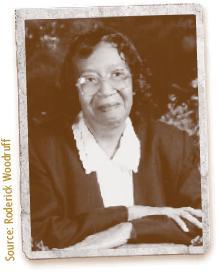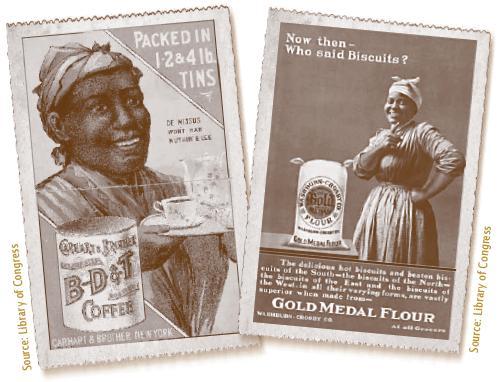America I AM Pass It Down Cookbook (9 page)

Rufus Estes’ Hominy Cake
SERVES 4
2 cups of boiled hominy
2 tablespoons of melted butter
1 egg, beaten
1/3 teaspoon salt
1 teaspoon black pepper
¼ cup finely grated cheddar or Parmesan cheese
Preheat oven to 250° F. Using a fork, smash the cooked hominy into fine pieces. Alternatively, pulse the cooked hominy in a food processor until fine.
Mix the hominy with eggs, salt, and pepper. Stir well until combined.
Form the mixture into small patties about 3 inches wide. Place in a buttered baking dish large enough to hold all the patties in one layer. Sprinkle with grated cheese and bake 25–30 minutes or until just golden brown.
Serve hot.
Rufus Estes’ Southern Corncake
MAKES 1 CAKE
2 cups white cornmeal
1 tablespoon sugar
1 teaspoon salt
¾ cup hot milk, or more as needed
3 eggs, beaten
Preheat oven to 350° F. Mix cornmeal, sugar, and salt together in a bowl.
Add milk to moisten the mixture to a soft dough. Beat in eggs and mix well.
Spread mixture into a greased 8 x 12 baking dish and bake until firm, about 30 minutes. Remove and cool slightly. Cut into squares and serve warm with butter.
Mr. Estes’ Corn Fritters
MAKES 10 FRITTERS
1 cup corn niblets, chopped finely
½ cup flour
½ teaspoon baking powder
1 teaspoon salt
¼ teaspoon cayenne pepper
1 egg, separated
½ cup canola oil
Mix the corn, flour, baking powder, salt, and cayenne in a bowl. Add egg yolk and mix well.
Beat egg white to stiff peaks and fold that into the corn mixture.
Heat oil in a wide, deep frying pan until it reaches 350° F or until a pinch of flour dropped into the oil bubbles.
Drop the corn dough mixture into the hot oil by the tablespoonful, turning once while cooking so they are lightly brown on both sides, about 2 minutes per side.
Drain fritters on a wire rack set over a cookie sheet or sheet tray, or on a paper towel-lined plate.
Serve warm with your favorite condiments.

Pass It Down tip:
These corn fritters make a great appetizer. Make them special by serving with a side of Remoulade Sauce (
page 231
) and garnishing with some freshly chopped parsley.

Monkey Bread à la Bailey
Detroit, Michigan
SERVES 6

Roderick Woodruff confirms that his beloved Aunt Zanola Bailey has been the keeper of the most trusted family recipes for decades. Indeed, no holiday can officially begin without the delicious smells of fresh bread baking in the oven. The casting of the monkey bread magic spell was bequeathed to Zanola by her father, Bruce Bailey, a master chef who planted a great love for family celebrations, joyous holidays, and good food in all of his descendants.
2 yeast cakes (or packages)
1 cup sugar
½ cup warm water
2 sticks of butter
1 cup milk
1½ teaspoons salt
3 large eggs and 2 egg yolks
6–7 cups of flour
Place 2 yeast cakes in a large bowl. Mix well with 1 cup of sugar and ½ cup of warm water. Wait to see little bubbles appear—ensures that yeast is active! Divide butter in half. Place one stick in a bowl near the stove to soften and melt. Place the other stick in a pan with 1 cup milk and add 1½ teaspoons of salt. Bring mixture to a scald.
In another bowl, beat the 3 eggs and 2 yolks slightly. Combine with yeast and sugar mixture. Mix well with wooden spoon. Add milk, butter, and salt mixture. Mix well with above.
Add flour cup by cup until mixture appears lumpy. Continue until the consistency is enough to place on bread board. Knead in the remaining flour plus a little more for 10 minutes. Place this in a large buttered bowl and cover with a plastic wrap until contents have doubled in size.
Punch down with fingers. For lighter bread allow it to rise a second time. Pull off piece by piece and layer them in a Bundt cake pan. Dip each piece in butter before placing in tube pan.
Bake at 350° F for 45 minutes to an hour. Color should be golden brown. Serve from the oven with honey butter or with butter and jelly for a special treat.
Patricia Lynch’s Buttermilk Cornbread
Oakland, California
MAKES 1 DISH
Mississippi native Patricia A. Lynch is the mother of one and an outstanding grandmother. She is also an expert cook who enjoys hosting functions for her family, friends, and church members. She says this savory cornbread is ideal for stuffing and dressing like Ms. Burrell’s Four State Oyster Dressing on
page 106
.
½ cup chopped onions
¼ cup chopped bell peppers
1 stalks celery, chopped
2 garlic cloves, minced
1½ cups yellow cornmeal
1 cup flour
2 teaspoons baking powder
¼ teaspoon baking soda
pinch of salt and pepper
1/3 teaspoon seasoning salt
1/3 teaspoon celery salt
2 large eggs
½ stick butter, melted
1 cup of buttermilk
Preheat oven to 425º F. Preheat an 8x8 baking dish, or large iron skillet in the oven.
Sauté the vegetables in 1 tablespoon of butter until translucent. Do not allow them to brown.
Mix the corn meal, flour, baking powder, baking soda, salt, pepper, seasoning salt, and celery salt in a large bowl.
Mix the eggs, butter, and buttermilk together in a separate bowl, and add them to the cornmeal mixture. Beat well and add the onions, bell peppers, celery and garlic.
Add 3–4 tablespoons of canola oil to the baking dish or iron skillet. Pour the batter into either the baking dish or pan. Bake until golden brown, about 15–20 minutes or until a cake tester stuck in the middle of the bread comes out clean.
Ironic Authority
African American Images in Food Advertising
BY MICHELE Y. WASHINGTON

Michele Y. Washington is a design critic, writer, and researcher interested in expanding the discourse in cross-cultural design and the role architecture, urbanism, visual and material culture, and fashion play in our everyday lives. She maintains a design consultancy in NYC and a blog that focuses on her research in cross-cultural research at
culturalboundaries.com/wordpress/
.
I
n 1991 I co-curated an exhibition
in which African American designers challenged modern stereotypes. Each graphic designer was charged with the task to create a one-of-kind poster addressing how blacks have been continuously portrayed in the media. I decided to tackle the image of Aunt Jemima by creating a poster I called “Ain’t Ja Mama on the Pancake Box.” As I researched my piece, I began to think deeply about the image of the heavy-set, wide-bosomed black woman, hair tied up and grinning from ear to ear. She was a soothing, even comforting figure in American food advertising. Pancakes, after all, are homey, cozy, sweet, and delicate.
The truth is, of course, that Aunt Jemima is just one of the poor mammy, pickaninny, and blackface characters who were a standard portrayal of Africa Americans— one that was used to peddle everything from tires to clothing to food.
Toni Tipton-Martin, a food historian, has extensively researched the origins of such symbolic black figures and contrasted their existence with a lack of respect and recognition given to black cooks and their integral role in America’s culinary arts. It’s a bitter irony that black cooks’ success has always been dependent on the authority invested in these figures. Aunt Jemima, Uncle Ben, and their offspring are experts in their “fields” and that’s what makes their products good.
It is an irony that was played out over and over in, among a myriad of places, the pages of popular magazines. Aunt Jemima, for example was portrayed as the expert teacher from whom the modern housewife could learn a thing or two in a 1927
McCall’s
magazine ad. “Have you tried her ingredients?” goes the tagline. By 1940, she appeared in
Woman’s Day
as a dating counselor, advising a young woman to make flapjacks with her easy mix as a way of getting her man to stay for dinner.
A fictitious character conjured by two white businessmen, Charles L. Rutt and Charles G. Underwood, to sell pancake mix, the Aunt Jemima character is loosely based on Vaudevillian blackface, whose characters had glaring red painted lips and crazed eyes meant to indicate their wild, unintelligent demeanors. In the flesh, real women portrayed Aunt Jemima at fairs and expositions, starting with Nancy Green, born a slave. Clever marketers, Rutt and Charles knew that the authority and believability of the character was absolutely dependent on the ring of authenticity.
Mars, the company that owns Uncle Ben’s Converted Rice, has always been hushed about their “spokesperson.” Uncle Ben was created in 1943 and his back-story has at times suggested that he was a respected rice farmer, although that was never directly depicted in any marketing materials. Yet the name “uncle” specifically relates to the habit of referring to older black men in a form of pseudo respect, since they were not worthy of the term “mister” but their age dictated some deference. Again, the irony of authority is bizarrely played out: It was slaves from the African rice coast (See the essay Bitter Grains,
page 167
) who had the heritage knowledge to keep the lucrative rice plantation culture going. Indeed, an “uncle” of Ben’s caliber would have exactly been the most dependable authority on rice.
Perhaps the most offensive of the holdovers is the black chef that still graces boxes of Cream of Wheat. His name is Rastus, a long-accepted pejorative for a particular type of dumb minstrel character. Yet even while the character is branded with an insulting name, he wears a chef’s coat and hat and, in fact, was drawn using a photo portrait of Frank White, a Barbados-born, African American master chef who worked in Chicago.